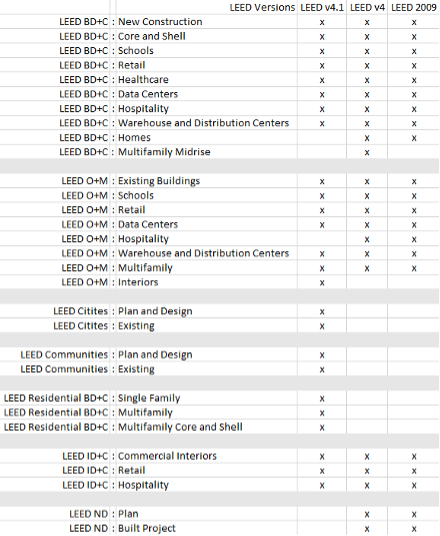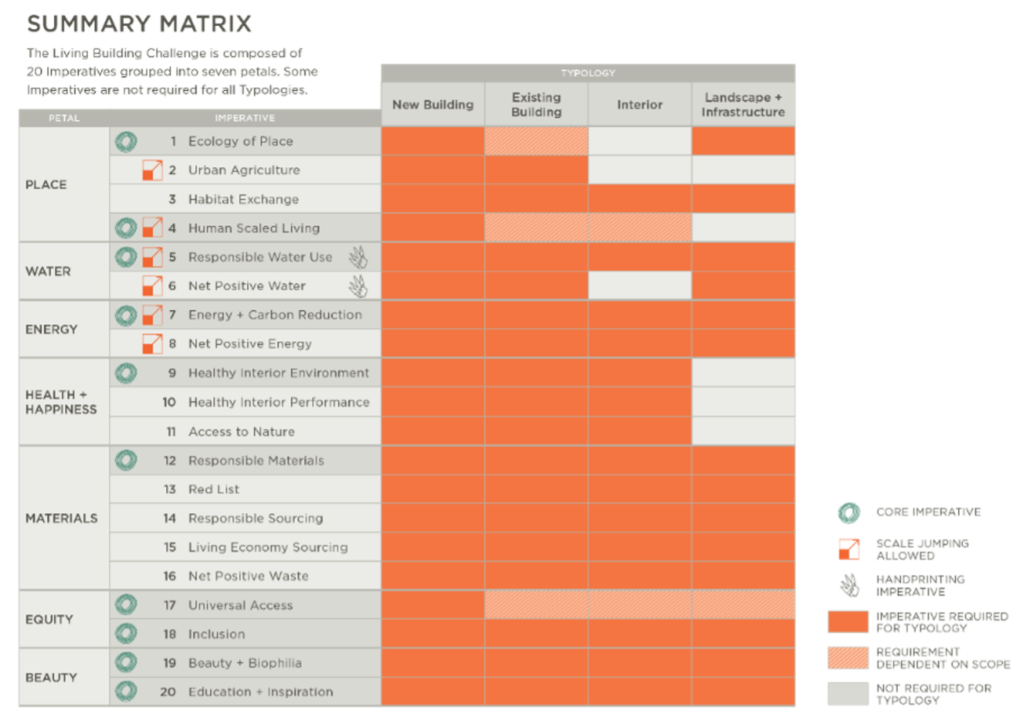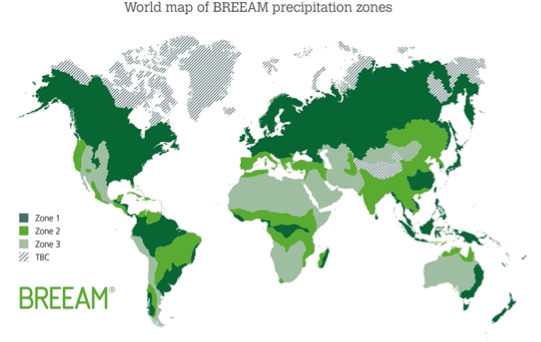Understanding what “Green Buildings” are and identifying the organizations that offer certification is just the start to a green building journey. Need a quick overview on “What is a Green Building”? Head over to our previous blog. In this blog, let’s take a deeper look into four certification programs: LEED, WELL, Living Future, and BREEAM. Whether you are researching Green Building certification for a new office building or an existing building, hospital, school, or community project, understanding the differences between the different organizations will help lead you to the best program for your need. Let us explore these options.

The WELL Building Standard
The International WELL Building Institute’s WELL certification focuses primarily on the occupant experience. Unlike LEED, the WELL program is dynamic and updated quarterly. In addition to its dynamic nature, WELL has maintained its core concepts, including a commitment to air, water, nourishment, and light. The WELL program is intended to cover all types of buildings. A highlight of the WELL program is the option for Owner-Occupied or WELL Core, pertaining to lease or rental space, interested parties to obtain certification. The last WELL program detail I want to highlight is the Optimizations available for nearly each core section. For those looking to obtain a greater credit score for a higher WELL rating, check out this overview of enhancing actions as a place to start.
Understanding what “Green Buildings” are and identifying the organizations that offer certification is just the start to a green building journey. Need a quick overview on “What is a Green Building”? Head over to our previous blog. In this blog, let’s take a deeper look into four certification programs: LEED, WELL, Living Future, and BREEAM. Whether you are researching Green Building certification for a new office building or an existing building, hospital, school, or community project, understanding the differences between the different organizations will help lead you to the best program for your need. Let us explore these options.

International Living Future Institute (ILFI)
The primary purpose for ILFI programs is to create a healthy future for all. Their programs have specific focuses on Building, Product, Community, Core Green Building, Zero Energy, and Zero Carbon. We will look at just the Living Building Challenge (LBC) section relating to building certifications. Two key differences of the LBC in comparison to other certifications are:
#1 – Compliance based on actual data vs. modeled/anticipated performance that requires a minimum of 12 months operational use before assessment.
#2 – All projects must be holistic, addressing all 7 Petals at the Core level minimum.
Similar to the USGBC LEED certifications, the Living Building Challenge differentiates between a New Building, Existing Building and Interior updates. The LBC also offers a Landscape + Infrastructure certification pathway.

Building Research Establishment Environmental Assessment Method (BREEAM)
Lastly, the BREEAM Green Building certification options from BRE Global. Although each of the above certifications can be used internationally, BREEAM originates outside of the United States of America and therefore has a USA specific certification program. BREEAM USA programs include New Construction, In-Use (existing), and Refurbishment & Fit-Out certifications. Additional available programs for other countries include Communities, CEEQUAL for Infrastructure Civil Engineering, and Home Quality Mark (HQM). Notable when considering a BREEAM certification is that this program uses the project’s location and climate to “weigh” certain credits higher/lower than others (e.g. low precipitation areas would get extra credit weight for water reclamation efforts).
With so many options for various building types and locations – it can be overwhelming to navigate! If you have questions about Green Building certification programs, please start a conversation with one of our experts here.


